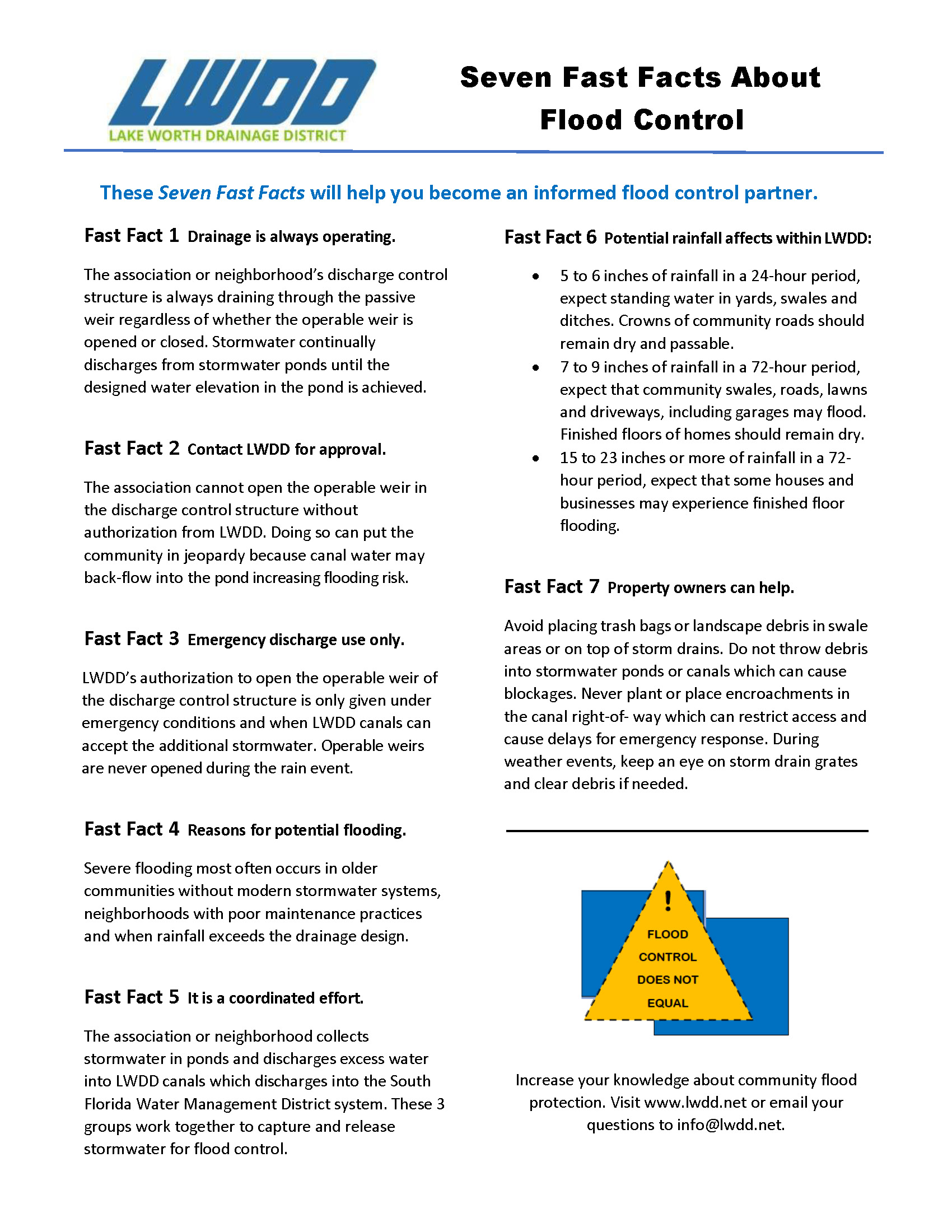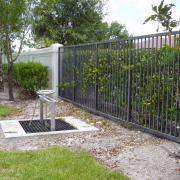Man-made lakes and ponds are attractive enhancements to many residential communities and businesses within the Lake Worth Drainage District (LWDD). More importantly, they serve an important public safety purpose by providing stormwater storage for flood control.
When lake elevations rise due to rainfall, excess stormwater will flow through the community’s discharge control structure and into the LWDD canal. Most of this drainage occurs unnoticed by the average individual. However, during a severe storm, flooding in streets, sidewalks and driveways may occur. This nuisance flooding may cause concern for some residents. However, these low-lying areas are designed as secondary detention areas to protect homes from flooding.
Within LWDD, flood control is a shared responsibility and achieved through an interconnected, three-tiered drainage system. By working together, these three systems provide effective flood control.
This three-tiered system is made up of:
- Tertiary, or neighborhood drainage systems operated by property owners or residential associations.
- Secondary drainage systems which are operated by LWDD (lwdd.net).
- Primary system operated by the South Florida Water Management District (sfwmd.gov).
Water managers in charge of primary and secondary systems are continually monitoring the weather and canal levels to proactively respond to changes in canal elevations. In anticipation of a heavy rainfall event, water managers will make operational adjustments to maintain appropriate water elevations for flood control. Additionally, throughout the year, routine canal maintenance is conducted to provide unobstructed flow in the canal channel and access along the canal rights-of-way.
Property owners and residential associations have a similar role. They must maintain their drainage infrastructure to ensure that inlets, pipes and discharge control structures are free of potential blockages and working as designed, thus maintaining the flow of stormwater away from their property. An annual inspection of drainage infrastructure should be made, and repairs should be completed before the start of storm season on May 1.
The likelihood of flooding depends on several variables such as rainfall volume, duration, ground moisture and local terrain. It is important to note that flood protection does not mean flood proof. No system, no matter how well designed, is 100% flood proof. Even with quality flood control, homes and businesses may experience flooding if rainfall exceeds the drainage design or stormwater flow is blocked by debris. For more information on flood control visit our website at https://www.lwdd.net/property-managers-hoa.






